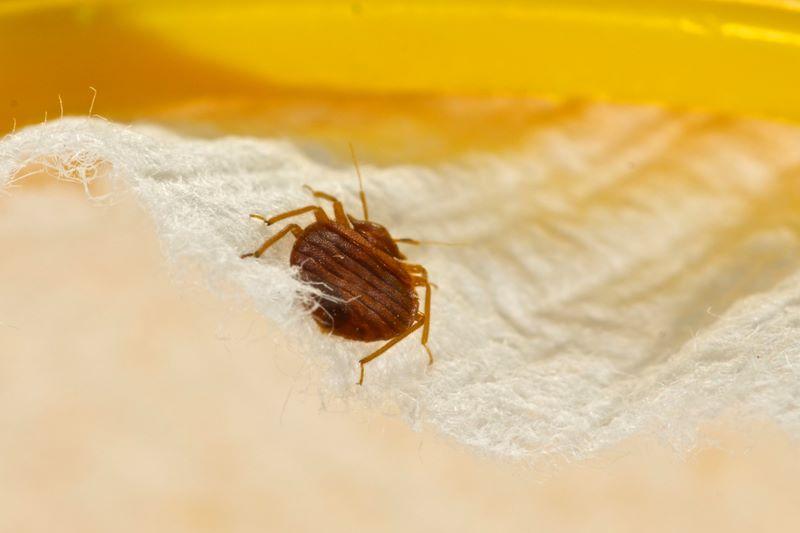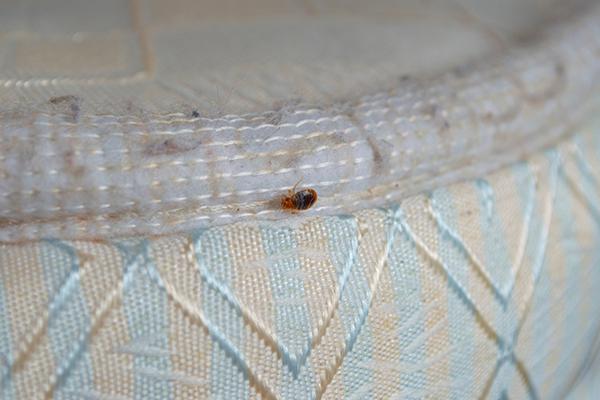Almost everyone is bound to have their own individual opinions involving Signs you have a bed bug infestation and tips to get rid of them.

Whoever created the phrase "do not let the vermins attack" is definitely on to something. You should not let these small bugs bite you since they can cause red marks and also welts. If you get an allergy, it can spread around your skin. It is certainly not a pretty sight to behold.
Unbeknownst to most, insects do not just penetrate your bed. Though they do enjoy your mattress since that's where you are and they can feed off of you quickly, bedbugs can expand in other locations, also. You can discover them on your sofa, curtain, towels, as well as storage room.
Bedbugs are normally nocturnal creatures that normally try to hide throughout the daytime. These bugs as huge as apple seeds generally forage for food during the night. However, if you are remaining on a bedbug-infested sofa, they will still attack and also suck your blood even when the sunlight is out. If you wish to figure out where the bedbugs are on your residential or commercial property, have a look at these 5 signs.
Seeing the Adult Insects
Of course, the top indication that your home is infiltrated with insects is seeing the animals themselves. Grown-up bugs are flat, oblong, and also reddish-brown. If they have actually simply finished eating, they will be engorged with blood as well as round fit.
At the same time, newly hatched insects, likewise called fairies, are rather large or transparent. For this reason, the younger ones are rather difficult to see. If you detect grown-up vermins, remove them fast or call for pest control services because they grow and multiply fast to establish huge nests.
Discovering Insect Eggs
You can additionally attempt to see if you can identify vermin eggs throughout your residence. They are milklike white in shade as well as appear like a small grain of rice. Fully grown bugs lay them at night. They enjoy to dental implant the eggs in little splits so they can continue to be secured as well as undisturbed up until they are ready to hatch.
Observing Dried Out Blood
Do you see a great deal of red streaks of blood when you get up? Do you observe these in your clothing or upholstery? If you have no open injury however see these specks of red, it is a clear sign that you've obtained an energetic insect issue. Worst of all, they've been feeding on you as you are their target. Do not wait on multiple bite marks before you call the pros. Nip the trouble in the bud prior to things intensify.
Spotting Lost Vermin Skin
Bedbugs dropped their skin frequently, also known as the exoskeleton. They will certainly do this around 5 times as they grow and also grow. The shed skin appears like an actual vermin in type. However, the exoskeleton is in some way sheer. And certainly, it will certainly not be mobile whatsoever.
Noticing Pest Excrement
Of course, insects are living creatures that pee as well as defecate. It is however natural to see their waste in your bed, furniture, and also other things. You might see thin black touches or black spots that resemble dirt. If you observe this in addition to the various other tell-tale indications above, you have actually clearly obtained a bedbug problem. You need to get in touch with our group for complete insect treatment as well as future prevention strategies.
Tell-Tale Signs that You Have a Bed Bug Infestation
Just the thought of bed bugs is enough to send most of us into a cringe and unfortunately, they often find their way into the cleanest of homes. Most homeowners don’t even realize they have an infestation until the problem is advanced and they see active bugs, egg sacks, or nymphs. The best way to keep your home bed bug free is to inspect your beds and upholstery regularly and look for tell-tale signs that bed bugs may be nearby.
Bed Bug Signs That Are Often Overlooked
If you’ve read much about bed bugs, you know that one of the questions which comes up repeatedly is, “Are bedbugs actually invisible?” The short answer? No, not at all. Still, it’s easy to understand why people ask. The CDC explains that bed bugs “range from 1mm to 7mm (roughly the size of Lincoln’s head on a penny). … They hide during the day in places such as seams of mattresses, box springs, bed frames, headboards, dresser tables, inside cracks or crevices, behind wallpaper, or any other clutter or objects around a bed.”
That’s extremely small, and these itty-bitty insects excel at secreting themselves away in hard-to-access spaces. You may never see a bed bug even if an area in which you live positively teems with them. Indeed, rarely are such insects so common and so little understood by an average consumer. PestWorld.org, a publication of the National Pest Management Association, notes that approximately 97 percent of pest-control professionals have treated a site for bed bugs within the past year. However, “84 percent of pest control professionals were initially contacted about a different type of pest before identifying them as bed bugs.” Additionally, PestWorld.org noted that roughly 20 percent of all Americans know someone who has dealt with bed bugs or have dealt with them themselves.
Trying to hunt down extremely small and incredibly common bugs with a penchant for hiding sounds like a daunting task. Perhaps, but you generally can spot the signs of bed bugs’ presence. The problem lies with the fact that many people don’t know what to look for. If you think you might have bedbugs, try to discern the following signs.
Bed Bug Shells or Molted Skins
A prime indication that you have bed bugs is the presence of bed bug molt. But before you begin your search, you should know how bed bugs develop. Like other insects, bed bugs lack an internal skeleton, relying instead on a stabilizing exoskeleton. As they develop, they go through five different stages, growing from smaller than a pinhead into insects of about 7mm in size. Each stage requires them to shed that exoskeleton — and that’s what you want to look for.
A bed bug shell should look exactly like a little bed bug. The catch is that there isn’t a tiny animal inside that shell. It has already moved on. You may also find abandoned egg casings. They may appear pale in color and can darken based on the insects’ age.
Where should you look for these casings? Bed bugs tend to live within an eight-foot radius of where people sleep and like to secret themselves away in and around beds, mattresses, and headboards. They can turn up in the seams of furniture and luggage. During your search, you may also notice a sickly sweet odor reminiscent of raspberries and rot. This is a related sign.
Fecal Stains and Blood Stains
Bed bugs are simply gross, and one of the grossest signs of their occupancy involves the remnants and residue of what they eat. Plainly put, bedbugs subsist solely on blood, and you’re likely to find splatters where they feed. When bed bugs bite, they use an anticoagulant to make sure that the blood keeps flowing. That means you and your loved ones may bleed a little more from bites — and leave bloodstains behind on sheets, pillowcases, or pajamas.
Additionally, like all living creatures, bed bugs need to defecate, and you’ll find evidence of their feces around mattresses and on sheets. If it looks like dried blood, it basically is. In fact, if you wet and smudge it, you may notice that it reconstitutes and looks a little like blood.
How to Get Rid of Bed Bugs
Home-treatment options for bed bugs abound, but few of these work well enough for us to recommend them. Still, you can take steps that will help professionals remove bed bugs from your property.
The first step involves determining that you actually have bed bugs, which we have been covering throughout this article. In addition to following the suggestions detailed above, try to capture a sample of the bugs. This will help a pest-control professional determine if bed bugs are causing your problems.
Next, you should maintain a thorough record of when you find the pests, what signs they leave, and any bites that you experience. This provides additional important information.
Once you’ve determined that you have a bed-bug infestation, you ought to try to contain it as much as possible. This will depend heavily on exactly what items are holding the bed bugs. You may want to throw them out entirely. You may want to seal smaller items in plastic. (The EPA states that letting plastic-sealed items sit for a year guarantees the elimination of bed bugs.)
https://www.smithereen.com/blog/tell-tale-signs-bed-bug-infestation/

I'm very enthusiastic about Key Warning Signs And Symptoms Of Bed Bugs and I'm hoping you liked the new blog entry. Sharing is nice. You never know, you will be doing someone a favor. We take joy in reading our article about Top Signs You Have Bed Bugs.
Automated Marketing